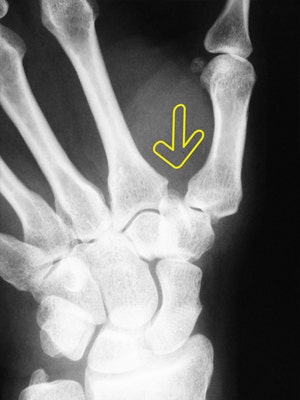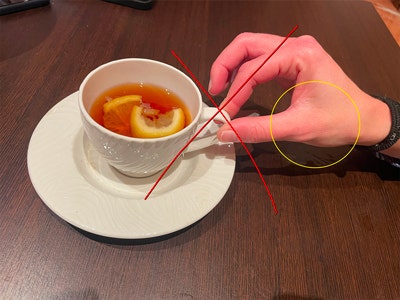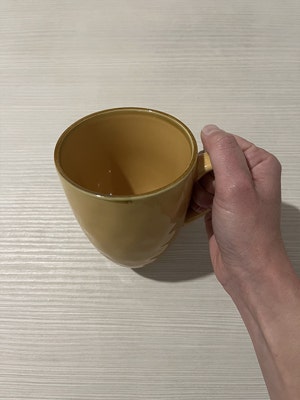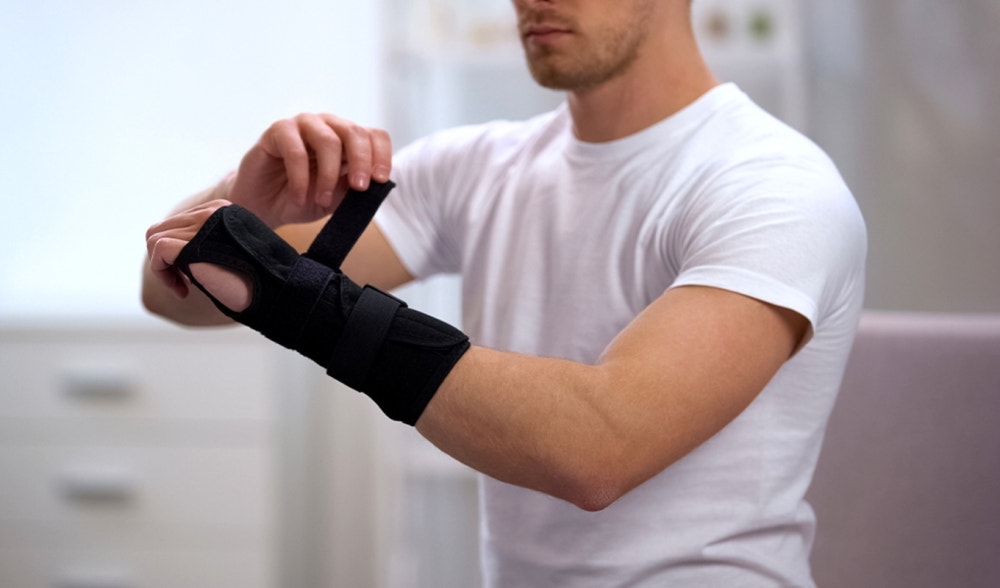Rizoarthrosis refers to the presence of arthrosis at the level of the trapezio-metacarpal joint at the base of the thumb.

This is a pathology that is more frequent in females, the incidence of which increases with age.
Typically, in the early stages, the patient reports pain at the base of the thumb especially in association with certain movements such as turning keys or opening jars.
Over time the pain becomes constant and can, in some cases, disturb night rest leading to awakening.
The diagnosis is typically clinical, based on the patient's history and the physical examination performed by the specialist. Clinical confirmation is obtained through the execution of simple radiographs (it is good practice to perform the radiographic examination bilaterally as this pathology usually manifests itself in both hands, often with reported pain of different entities).
Attention must be paid to the differential diagnosis with a laxity of the trapezius-metacarpal joint.

The latter typically occurs in young women and causes pain in the same location and during the same movements; unfortunately both conditions are often erroneously defined as rhizarthrosis, but the treatment is completely different.
TREATMENT
Unfortunately, in the event of major degeneration, there is nothing that can restore the original anatomy to this small joint, so prevention and dealing with the clinical picture as soon as it appears is essential to postpone any major and more aggressive operations as much as possible.
Conservative therapy
The first approach to this pathology must be of a conservative nature, given the progressiveness of the clinical picture.
To try to obtain a regression of the symptoms, braces modeled on the shape of the patient's hand are used. Typically two types of braces are packaged, to be worn at different times of the day.
At night a brace is used, called static, which includes the first ray; this has the purpose of putting the joint at rest and consequently lowering the inflammation that is always present in the case of rhizarthrosis.


During daily, work or sporting activities, a small brace is used, called functional, which leaves the wrist completely free, with the aim of stabilizing the joint affected by arthrosis, but allowing the necessary movements.
It is essential to instruct the patient in the correct daily use of the hand. The movements that may seem the least demanding, such as writing, holding a cup are extremely demanding as they are repeated hundreds of times in a day; just think that a force of one kilo exerted in the pliers movements between thumb and forefinger corresponds to a stress of 10 kilos at the level of the joint we are dealing with. One of the many suggestions given is, for example, to use a wider grip for cups, to use wider pens or pencils, this for an anatomical question centralizes the load axis of the metacarpal on the trapezius (the little bone with the which is articulated).


Infiltrative therapy
There are numerous infiltrative therapies described in the case of osteoarthritis.
The most advanced infiltrative therapies consist in the use of the so-called regenerative medicine, which uses the regenerative potential inherent in some cells of our body.
Platelet-rich-plasma (PRP): PRP (platelet-rich plasma) is a powerful concentrate of growth factors capable of stimulating tissue regeneration. It is obtained thanks to a technique which involves the centrifugation of autologous blood (i.e. taken from the same patient) within a process which ends with the production of a part of plasma with a high concentration of platelets. This concentrate has high concentrations of growth factors that help maintain tissue homeostasis and reduce inflammation
Autologous adipose tissue graft: The latest discovery in the field of regenerative medicine is the use of mesenchymal stem cells derived from the subcutaneous tissue. These cells behave like real pharmacies, capable of releasing molecules with an immunomodulatory action into the context of the tissue being infiltrated. This has the purpose of modulating and lowering the inflammatory level which is a contributing cause of the pain complained of by patients. To obtain these cells, a small liposuction is performed (usually from the abdominal region); the lipoaspirate is processed, the target cells concentrated, and then the joint is infiltrated. The procedure is performed in day hospital with a few hours of hospitalization.
It is fundamental and correct to remember that these therapies are indicated only in the initial stages of degeneration.
Surgical therapy
It is very important to emphasize that the main indication for performing the surgery is not given by the radiographic image but exclusively by the pain and functional limitation referred to by the patient. In fact, there are people with "bad" x-rays who have less pain than those who have "good" x-rays.
Numerous surgical procedures have been described for the treatment of rhizarthrosis, most of which involve the removal of the trapezius, the cause of the pain.
The hand surgeon must not only perform one type of operation, but must be able to opt for the most suitable technical solution for the type of patient. The loss of the joint space, the stability of the ligaments are, for example, just a few parameters that indicate the best technique.
Below is a brief description of the three main techniques.
Trapeziectomia e legamentoplastica: This technique involves the removal of the trapezius and the reconstruction of the ligament that stabilizes the base of the first metacarpal. Following the surgery, performed in day hospital and with loco-regional anesthesia (in the arm), immobilization is maintained for about 2 weeks after which the rehabilitation protocol begins. Physiotherapy is to be considered an integral part of the treatment, and can last up to three months.
Trapezio-metacarpal arthrodesis : in this case the trapezius is not removed, but the latter is fused with the base of the first metacarpal. Immobilization in this case is to be maintained for at least 4 weeks or in any case until bone healing. This type of intervention would seem to increase the residual force at the expense of the complete mobility of the thumb.
Arthroscopic hemitrapeziectomy : This intervention involves the arthroscopic section of the articular portion of the trapezius, site of arthrosis and therefore of pain. The operation takes place completely arthroscopically, with two small accesses of about 1 centimeter in size. Again there is an immobilization of about 2 weeks, followed by rehabilitation.
Regardless of the type of intervention, a rehabilitation protocol performed by a therapist specialized in wrist and hand pathologies is always fundamental.


Comments
Write a comment about the article